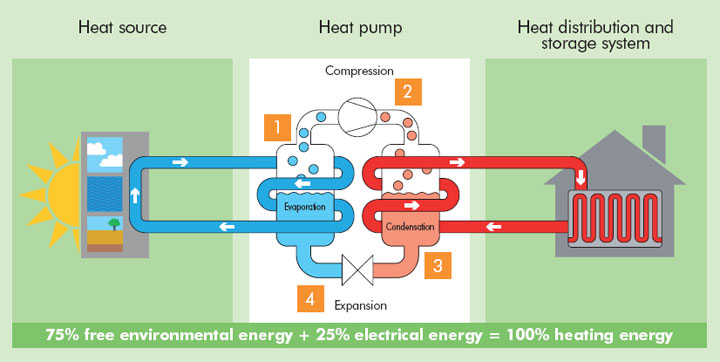
How do heat pumps work
A heat pump heating system consists of 3 components: the heat source, the heat pump itself and a heat distribution and storage system.
Heat pumps are able to produce more energy than they consume by using the conventional refrigeration cycle to absorb heat from the environment and raise it to a suitable level for heating.
A large quantity of low grade energy absorbed from the environment is transferred to the refrigerant inside the heat pump (evaporator). This causes the temperature of the refrigerant to rise (even at sub zero temperatures) causing it to change from a liquid to a gaseous state.

The refrigerant is then compressed, using an electrically driven compressor, reducing its volume but causing its temperature to rise signifcantly. A heat exchanger (condenser) then extracts the heat from the refrigerant to heat water for central heating, underfloor heating or domestic hot water. After giving up its heat energy the refrigerant turns back into a liquid and after passing through an expansion valve can once again absorb energy
